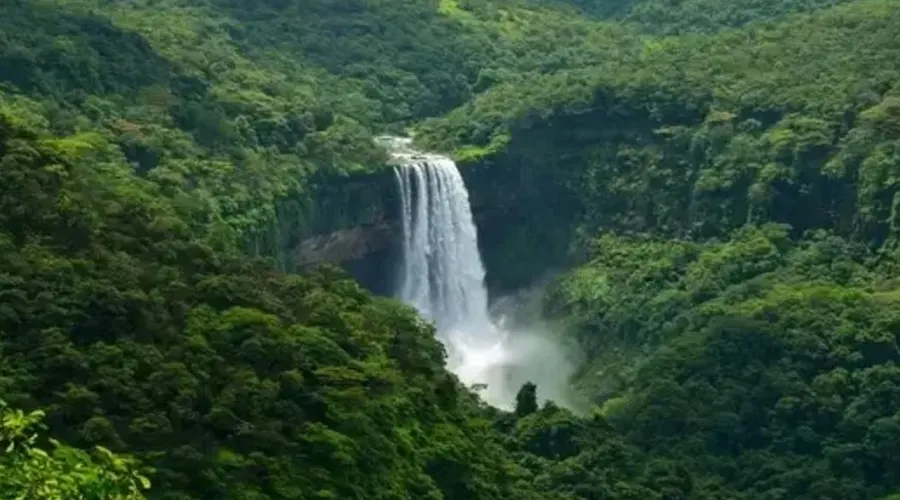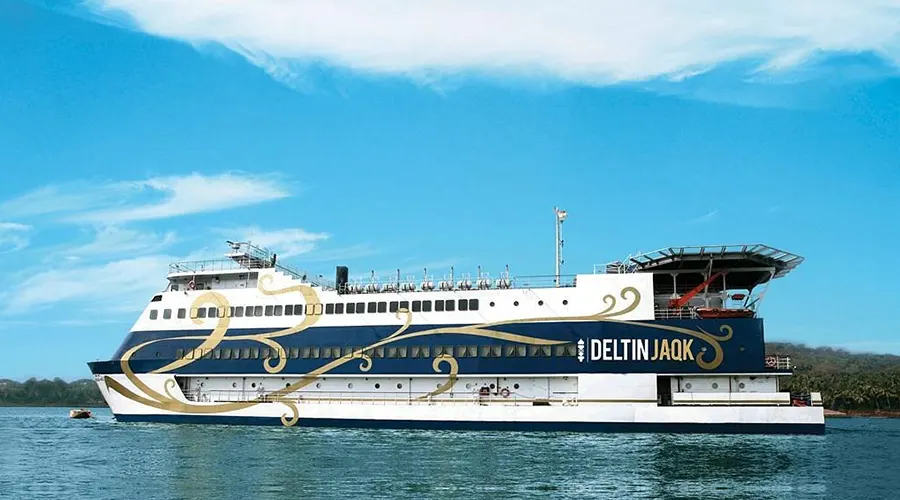Goa
A former Portuguese colony, Goa is also fondly known as the 'Rome of the East. Inhabited and colonized by the Portuguese for almost 450 years, the culture of Goa is distinctly different from that of the rest of India. Exquisite on its own, Goa is sometimes called, “The Miami of India”.
History of Goa
Located on the western coast, Goa is the smallest state in India. The history of this state traces back 20000 to 30000 years ago. It was known as ‘Rewti Dweep’, in ancient times. Several great rulers and their dynasties prevailed on this land, like the Sumerians, Mauryan King Ashoka, and the Delhi Sultanate. In 1510, the Portuguese established their colony in Goa, until 1961, when the Indian army regained the rightful province. Initially, Goa was declared a Union Territory. In 1987, finally, it attained the position of the 25th state of India.
Culture and Tradition of Goa
Goa has always benefitted as a trade center because of its easily accessible ports. With a beautiful harmonization of the East and West, Goans have taken the best of both worlds. A civilization of warm, happy people, Goa sees a mix of different religions like Christians, Catholics, Muslims, and Hindus that live together in harmony. Following their age-old traditions and customs, Goans celebrate all major festivals with great passion without bringing any religious barriers within the society.
With a strong influence from the west, Goa has always had a more contemporary mindset. Their rich heritage culture has not been tarnished by the rapid industrialization that has become commonplace in the rest of India yet. Celebrating livelihood and religious festivals with scrumptious food and delightful music, the locals are humble, warm, and fun-loving individuals.
Goans, a term beloved by the people of the state, practice ‘siesta’, wherein they shut down their shops and give in the afternoon rest, from 1 to 4 pm. The community is inclusive, and the friendly natives come together despite religious differences. Such is evident during celebration and worship. The colorful traditions of the state are portrayed in their folk performances, including music and dance.
Dance and Music Culture of Goa
Goans have a particular fondness for performing arts. A beautiful blend of Indian and western dance forms, Goan dances include Fugdi, Dhalo, and the Kunbi date back to the Portuguese era in Goa. The folk dances and music in the state are performed for both religious festivals and cheerful events.
Dekhni Dance
Performed while wearing a ghumat, this dance form is accompanied by a song that has western roots whereas the dance has an Indian origin. The Dekhni dance is performed by only the women of the community and is one of the best-known traditions of Goa.
Goff Tolgadi And Shigmo
These are a couple of dance forms that are very local to the Goan community and are usually performed during the months of Spring, as an offering and jubilation that the season brings to the peasants and their crops. The Goff consists of weaving braids with various tints of colors and is often performed by the people residing in the Canacona Taluka (province) of Goa.
The Shigmo is marked by traditional dances that are performed by wearing colorful dresses accompanied by beats of dhol, tasha, or of cymbals. Processions of floats on which can be seen passionate actors enact performances conveying the history of Goa can be seen throughout the street of Goa.
Traditional Goan Attire
The traditional costume of the womenfolk in Goa comprises that of a 9-yard sari also referred to as the ‘Pano Bhaju’ and some jewelry to balance out the entire outfit. The fishermen do not have any particular attire but are usually seen adorning bright cotton shirts with half-pants and bamboo hats. The attire of the tribal people in Goa comprises a loincloth known as ‘Kashti’, with a blanket draped around their shoulders. The women wear a traditional sari with a tied knot using their ‘Kunbi palloo’ and have a very distinctive dressing style. The famous Goa Carnival exhibits the plethora of bright colors and costumes that are found in the state.
Languages of Goa
Goa is home to people belonging to diverse ethnic communities, each of whom has its language. The most commonly spoken dialects are Konkani and Marathi. Other than these, people also speak Hindi, English, and Portuguese.
Religion of Goa
In Goa, religions play a significant role in everyday lives with three major ones being Hinduism, represented by around 60% of the people, Christianity (30%) as well as Islam (10%).
Prior to Goa being colonized by the Portuguese in the 16th century, Hinduism was the state’s main religion, but following the invasion, the Portuguese imposed Roman Catholicism on the citizens. When Goans again had the freedom to select their religion, Christianity had been extensively established throughout the State.
Goa has become a highly religiously tolerant state. The Hindus, the Christians, and the Muslims live contentedly together. In fact, from Renaissance architecture in Goan temples to Christian prayers recited in Konkani, they have taken on many similar characteristics. You will certainly observe both religions dwelling happily next to one other while you traverse the state. Next to elaborate temples of Hindu origin and the mosques, Christian churches also tower tall.
Cuisine of Goa
The cuisine of Goa comprises Portuguese, Hindu, and Islamic styles of cooking. This amalgamation results in a grand variety of rich, delicious dishes. Seafood is a common delight for the people, with its spread of deftly spiced and seasoned dishes.
Vinegar and coconut milk are used a lot in cooking. European spices are often included in Indian curry dishes. Rice and fish curry is a staple meal of the Goans.
Khatkhate is a vegetable stew that is prepared during festivals. It contains fresh coconut, spices of Goa, and at least five vegetables.
Other special dishes include pork preparations like xacuti, Vindaloo, Chorisa, and Sorpotel. A festive favorite for the Goans is their beef and pork roasts which are a must-try during Christmas and is best paired with Goa's famous brew Feni, made with fermented cashews. Other dishes like the Bebinca (a multi-layered sweet dish) and the Khatkhate are essentials when friends get together or during festivities.
Fairs and Festivals of Goa
Festivals such as the Shigmo festival, Kalas Utsav, Shri Shanta Durga Jatra, Novidade, Bonderam Festival, and Goa Carnival showcase the spirit of Goan culture with effervescence. The Jatra feasts involve a grand procession of ‘palakhi’ or palanquins where innumerable people participate. The occasions of Christmas and New Year celebrations are great attractions for tourists.
Occupation of Goa
Most Goans are engaged in employment and organizations based on agriculture, fisheries, and tourism. Paddy is the main crop. The local farmers work in lush green paddy fields in the monsoons throughout the day. Many farmers also cultivate cash crops such as coconut, cashews, mangoes, areca nuts pineapples, jackfruit, and many more tropical crops. Many people in the summers brew the famed Feni tipple. Another important business in Goa is fishing. Fish are the lifeline of the state’s diet, having 66 km of shoreline, 11 inland rivers, and 42 tributaries traversing the state.
Tourism has become one of the major players in the state’s economy. Many Goans, therefore, work in tourism-related industries such as guides for tourists, taxi drivers, self-owned tourism companies, and so on. Baking is another Goan custom that gives a job to many of Goa. In every community there are traditional bakers from Goa, making Pao, Polis, and other Goan bread.
Adventure Sports of Goa
Two of the most popular sports that people of Goa love and participate in are football and bullfighting. Water sports like rafting, scuba diving, snorkeling, banana boat ride, kayaking, jet skiing, speed boating, kite surfing, and Ringo ride are popular attractions in Goa. It is the only state in India where gambling is legal, and thus, conveniently boasts of a flourish of fine casinos.
Nightlife of Goa
The nights of Goa come to life in the pulsating beats of a land that never sleeps. The parties and celebrations pose as bright and youthful destinations for people all over the country and even the world. Lights, music, and an environment of no-worries-of-the-world are sought after at such hours of the night.
Tourism of Goa
With its sweeping beachside, enriching folk music, and dance, and the heritage architecture of forts and churches. Goa is an extremely popular tourist attraction among Indians and foreigners alike. It’s perfect for relief from the demands of life and relaxing the spirit. Therefore, tourism in Goa is its primary industry that thrives all year long.
Goa has innumerable places of worship. The Basilica of Bom Jesus, St. Cathedral Church, and Our Lady of Immaculate Conception are some of the prominent churches. Mangueshi Temple of Lord Shiva, Shri Kamakshi temple, and the Mahalasa Temple are renowned among Hindu devotees. Safa Masjid at Ponda and the Jama Masjid are significant mosques.
Besides its religious structures, Goa’s architecture is also reflected in forts such as Reis Magos Fort, Mormugao Fort, Rachol Fort, and Naroa Fort.
Among its attractive beaches, one must visit Candolim Beach. Bambolim beach, Baga Beach, Sinquerim Beach, Vagator Beach, Palolem Beach, Agonda Beach, and Arambol beach are equally good.
Other sites of natural wonders include Mayem Lake, Dudhsagar Falls, Kesarval Springs, Arvalem Falls, and Kuskem Falls.
Goa also is home to various animals and birds, and its most famous wildlife sanctuaries include Bondla Forest, Bhagwan Mahavir Wildlife Sanctuary, Mollem National Park, and Cotigao Wildlife Sanctuary.
















































































































































































